The Green Butt Skunk has accounted for numerous fish, and since its inception around the 1950s by Dan Callaghan, it has become one of the most effective and popular steelhead flies of all time. Dan Callaghan modified the original Skunk pattern and spiced it up with a green butt. Ever since many steelheaders will have a Green Butt Skunk in their fly box.
Our friend Stuart Foxall (Instagram: @stuartfoxall) shows us how to make a variation of the Green Butt Skunk more “Spey-like” by exaggerating a short wing. “Spey like” or not the Green Butt Skunk has accounted for numerous fish over the years…and will continue to for numerous years to come. Make sure you have a few in your box for your next day on the river!
Instruction & Photos by Stuart Foxall (Instagram: @stuartfoxall)
Materials are detailed in each of the steps.
Step 1. Wrap your thread down to the beginning of the hook shank bending. I’ve used white thread so it doesn’t dull down the rest of the materials used in the fly.

Step 2. Tie in some fine oval tinsel in silver.
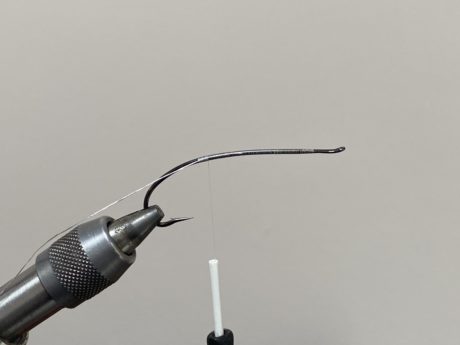
Step 3. Wrap the tinsel back along the hook shank in neat touching turns and tie off.
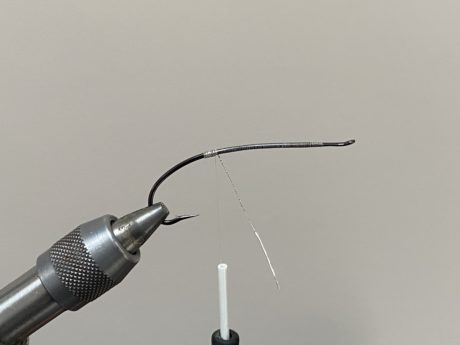
Step 4. Tie in some red-dyed golden pheasant crest feathers as a short tail. As I want a larger target point for the fish I’ve used two feathers.
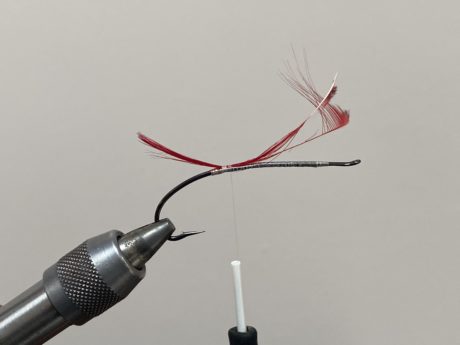
Step 5. Tie down the feather stalks all the way down the shank to create a smooth body with no “steps” then wrap your thread back down to the tail of the fly.

Step 6. Twist some chartreuse steelhead super bright dubbing onto the thread creating a tight “rope”.
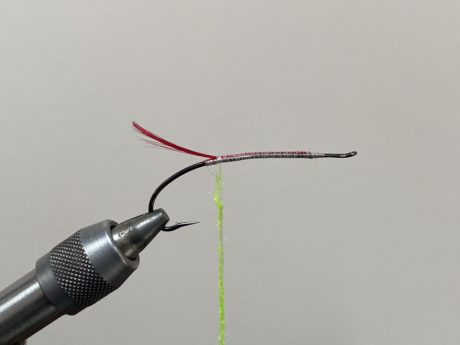
Step 7. Wrap the dubbing rope back along the hook shank to create a bright butt.

Step 8. Tie in some wider oval tinsel than before in silver to the bottom of the hook shank. Tie off your white thread.

Step 9. Attach some black thread and wrap on some black dubbing of choice into a rope again…..I’ve used a man-made dubbing here but natural fur also works.
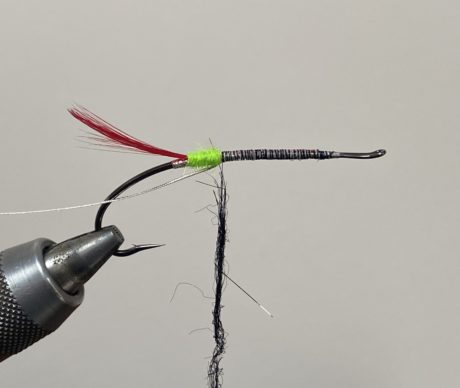
Step 10. Wrap the black dubbing rope back up towards the head of the fly. I’ve tried to make the body slightly “thicker” than the butt.
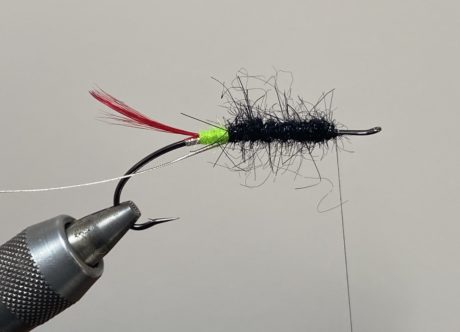
Step 11. Wrap the tinsel to protect the body in neat even turns and tie off.
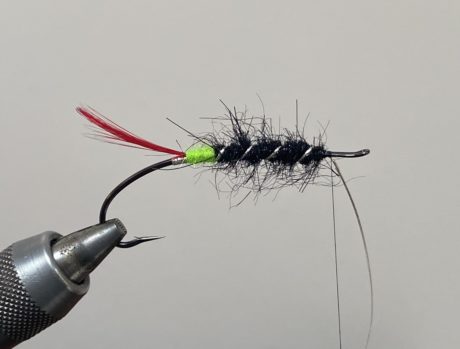
Step 12. Tie in a black pheasant rump feather by the tip.

Step 13. Wrap the hackle in tightly and tie in a “short” wing to exaggerate the “Spey” look. Notice how the long fibers of the hackle make the fly look a little “shrimpy”.I’ve used polar bear for the wing but calf hair, bucktail or even better some white cock hackle feathers will work great.

Tie in the wing tightly and cut off the wing butts. Form a small neat head and whip finish off. Although I’ve not done it on this picture give the head a few coats of varnish to protect.
Finished Fly
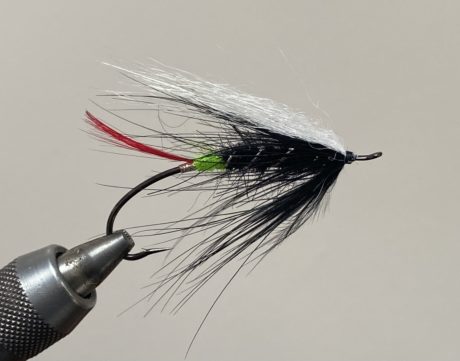
More Fly Tying with Stuart Foxall:
Leave a Reply